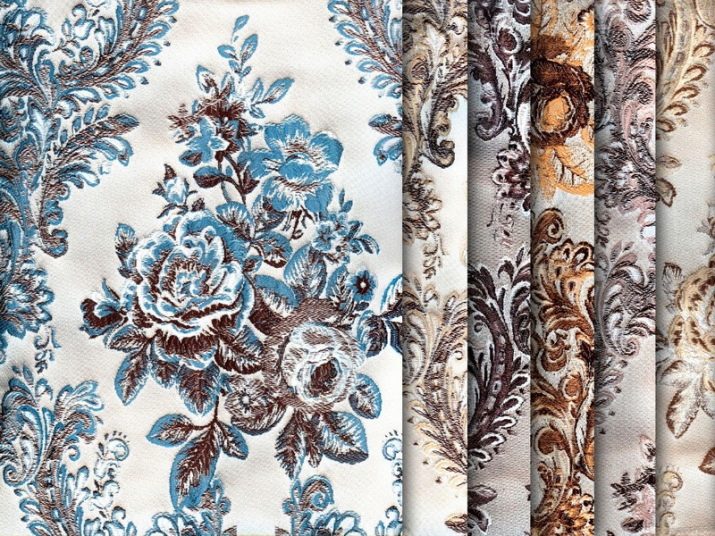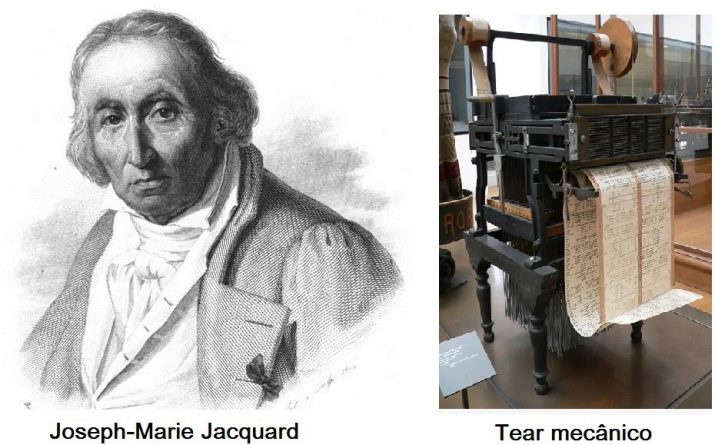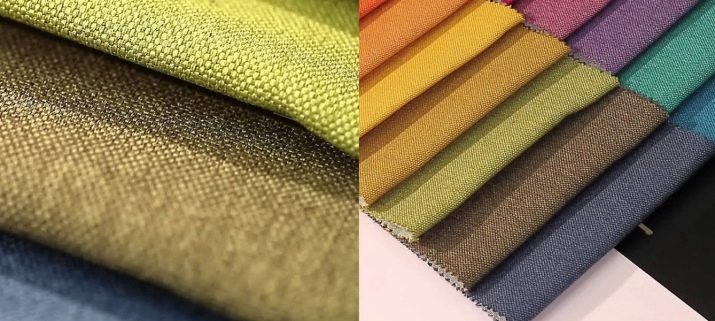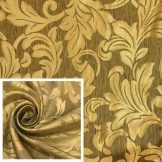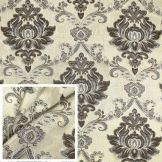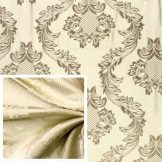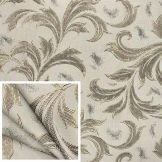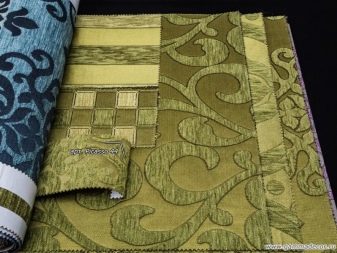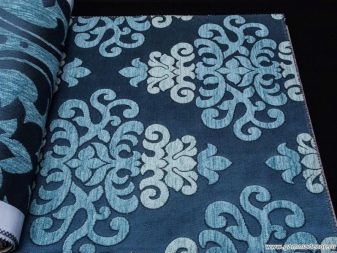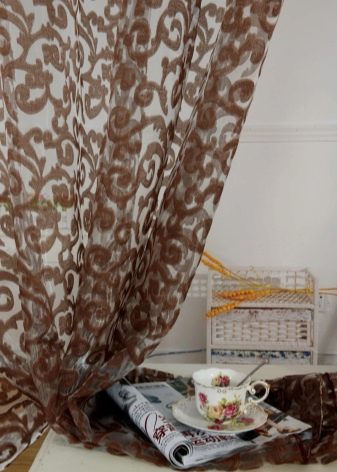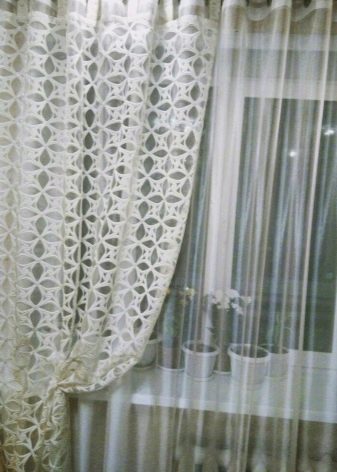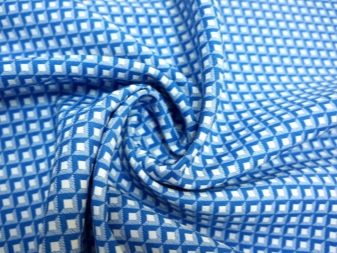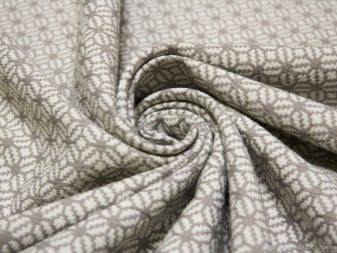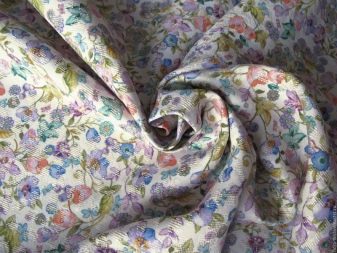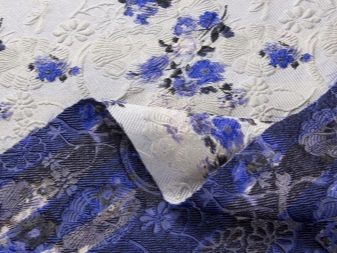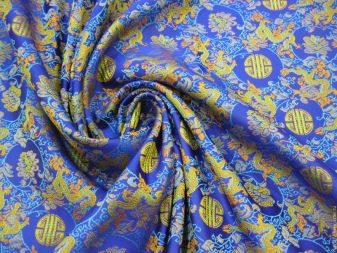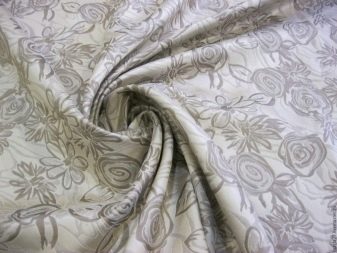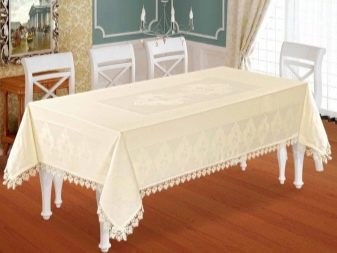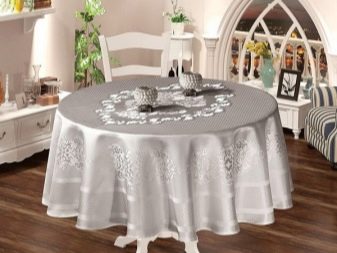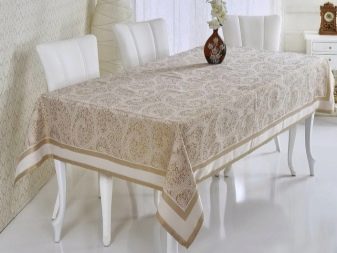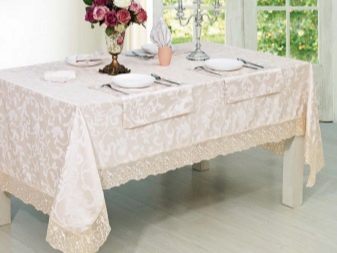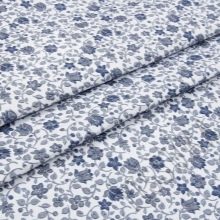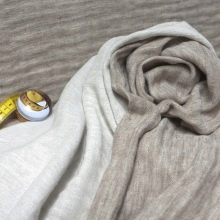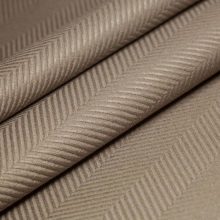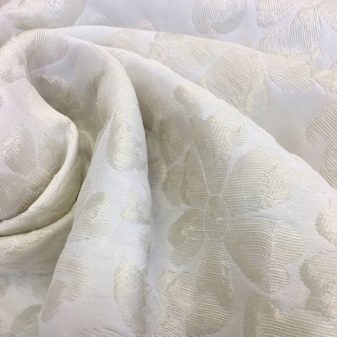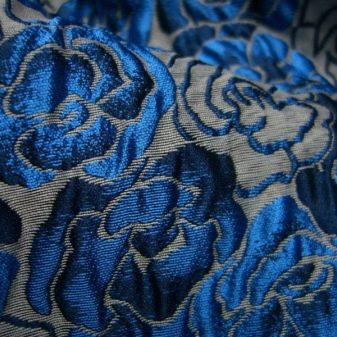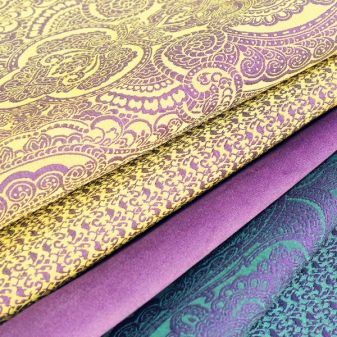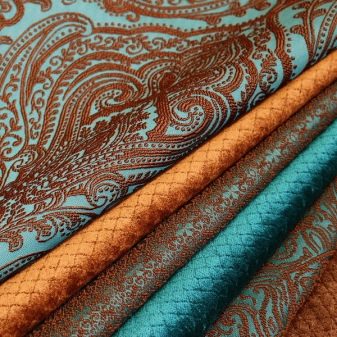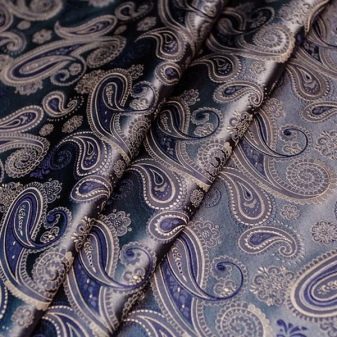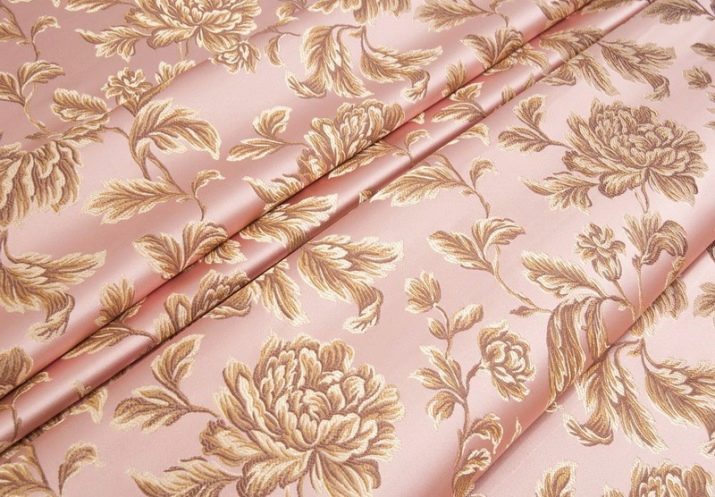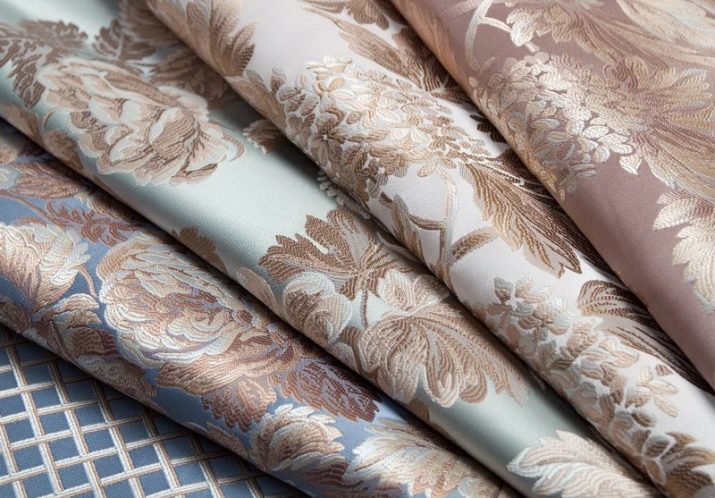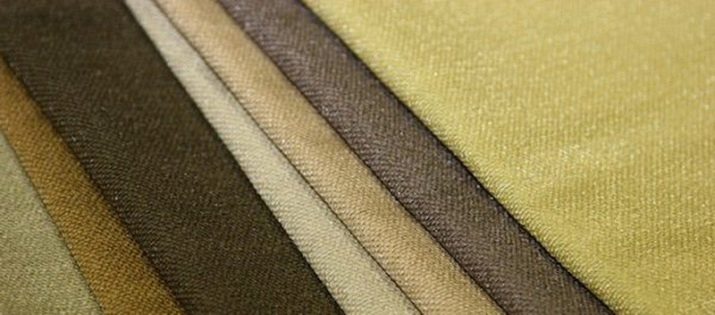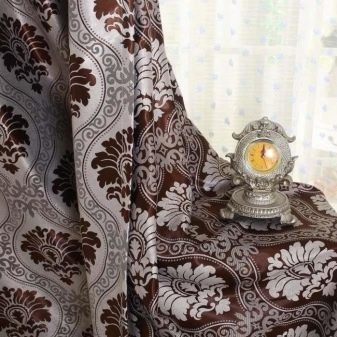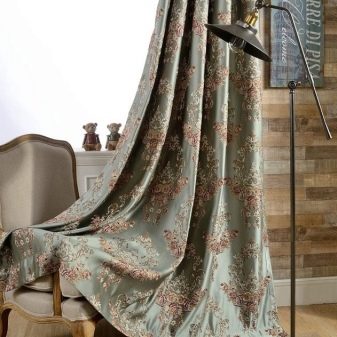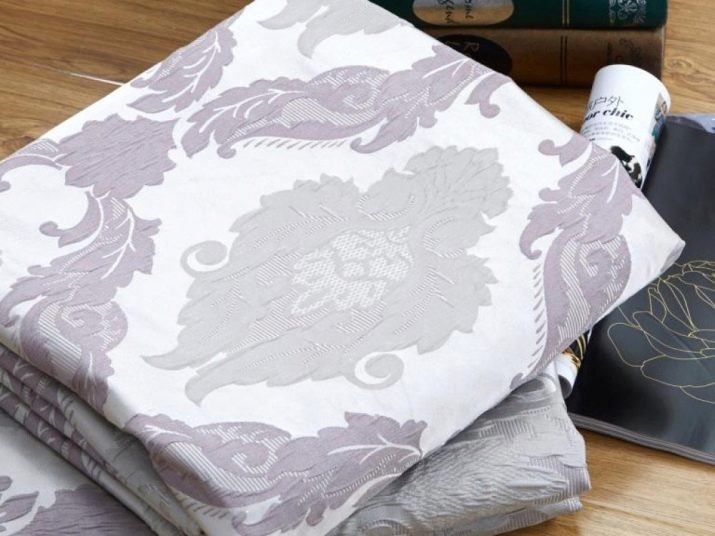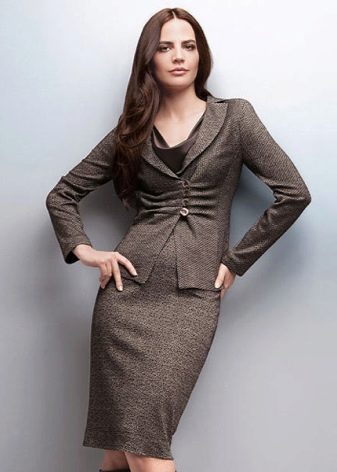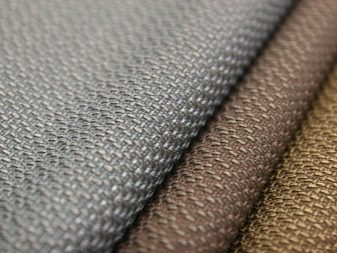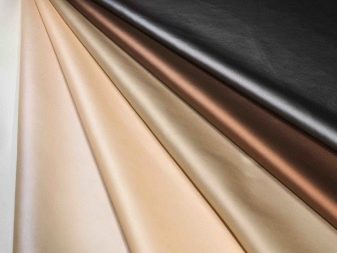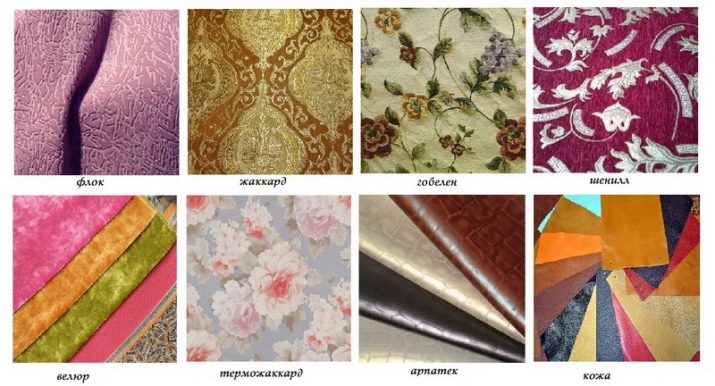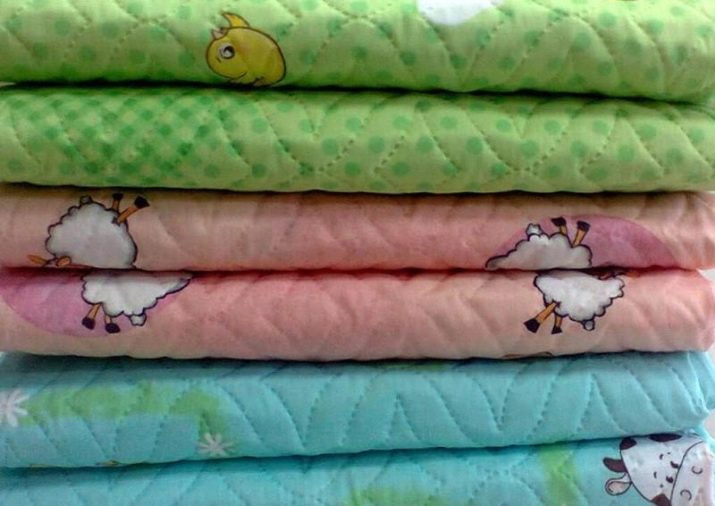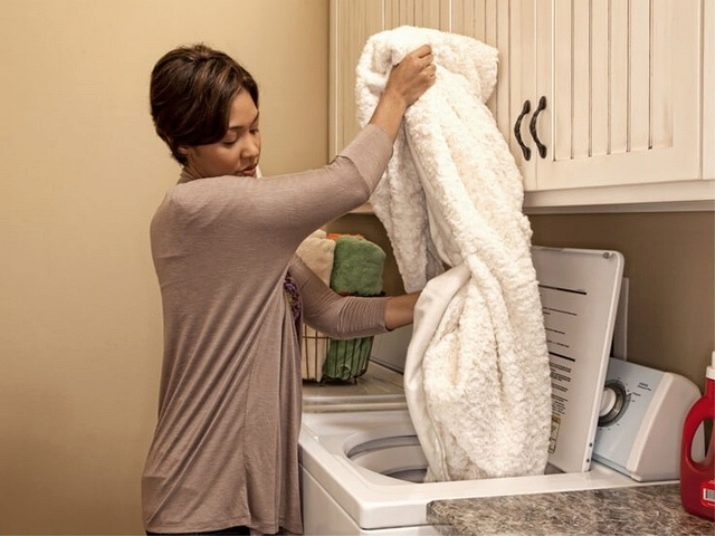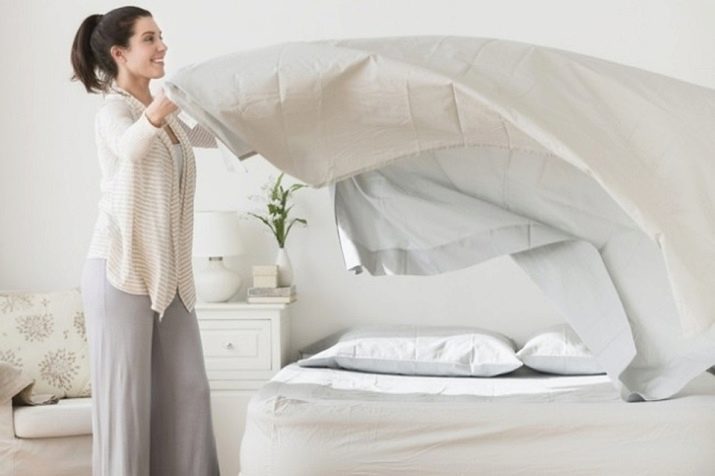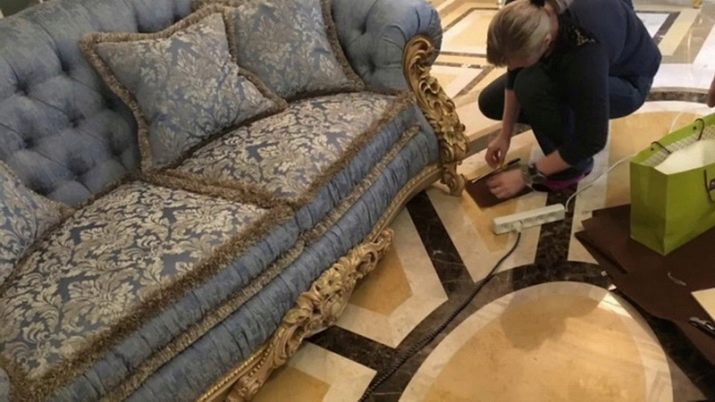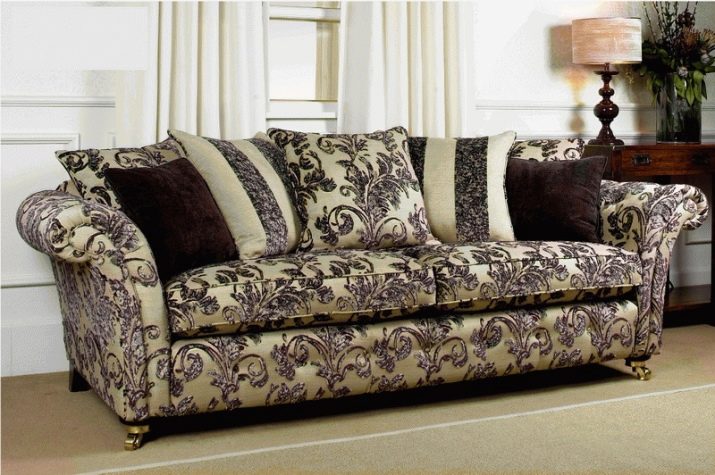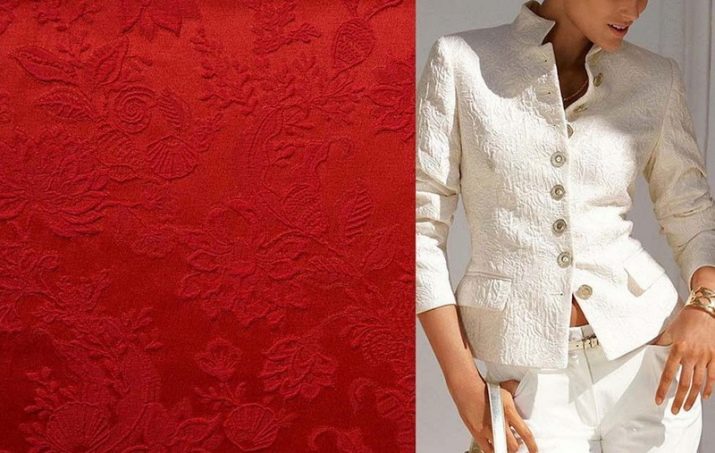For nearly two hundred years without a jacquard fabric, it is difficult to imagine a complete choice of curtains or table textiles, but in fact today the production of the same curtains and tablecloths is possible with a different technology. However, Jacquard never gave way to their place completely - it has its own advantages and disadvantages, which make it necessary to take a closer look at such material.
What it is?
For a start, delve into the story a little. In 1804, the French inventor Joseph Marie Jacquard proposed a new loom, which suggested a more intricate interweaving of individual threads, which made it possible to produce a very beautiful and at the same time fairly durable fabric. In France, where there is a great demand for everything that is elegant and beautiful, this decision was appreciated very quickly, and from there it spread over time to the whole world. Grateful descendants named such fabric Jacquard - in honor of its inventor.
However, today it will not be entirely correct to assume that jacquard fabric is any one particular material. The fact is that the Frenchman offered only a way to weave the threads, but no description of the technology contains precise instructions as to what they should be made of. Accordingly, in the modern world, both natural and synthetic threads are used for interlacing with the jacquard method, and different fabrics are obtained at the output, each of which has its own pros and cons.
If we talk about some common features for all jacquard fabrics, then, in addition to the weave, which only experts understand, a characteristic feature is the weaving pattern, which is applied not by dyes, but is formed by the special weaving of individual threads. Unfortunately, today some enterprising vendors of the same name reward other fabrics to which the pictures are printed or printed, which, naturally, has nothing to do with the original technology. This jacquard is somewhat reminiscent of tapestry, but differs from it in a number of features., for example, thinner and cheaper threads, as well as its lightness.
Types of jacquard
Even the original technology of jacquard weave does not put forward the slightest restrictions on the thread material, because today such fabrics are made from almost any existing threads. This situation creates a huge variety in the market of sewing materials, and although a good choice helps to achieve ideal results in the tailoring of certain textiles, sometimes this abundance even confuses a little. To understand, we will try to briefly go through the basic classification of jacquard fabrics.
According to the composition of the threads
Perhaps the main differences between the finished product lies in what made the individual threads in the weave. As a rule, the finished fabric in many ways adopts the main features of the material from which it is made.
It makes no sense to consider absolutely all the options, because we will select only the most popular and frequently encountered.
- Jacquard Organza, as well as usual, make from threads of different material - most often polyester or viscose threads, often in combination with silk. With an abundance of synthetic material, it is possible to achieve a particularly accurate transfer of the intended pattern, moreover, it is quite easy to weave metal threads into the structure of such a fabric.You can see such a material not only in the design of windows, but also in many modern wedding dresses, it also often appears in various theatrical clothes imitating the exquisite decorations of antiquities.
- Stretch or stretch jacquard enjoys great success in knitwear, because it tends to stretch and then return to its former form. For the sake of achieving the notorious stretching effect, modern stretching materials are used as the main components, including lycra, elastane, and even ultramodern velsoft. However, for a better look and heightened tenderness of matter, classical solutions like cotton or even poplin can add to it. Today, this material is very common, it surrounds you, even if you have never thought about it, because it is from it that people often sew everyday and outerwear.
- Cotton jacquard - Another popular material, which is based on natural raw materials and has additional strength and durability. Although modern synthetics in many ways pushes such decisions into the background, yet satin jacquard can be found in casual clothes, and even in covers for mattresses.
- Silk Jacquard, unlike many other fabrics, where silk comes in small quantities, suggests a significant proportion of silk itself, although it is not so important whether it is a matter of natural material or of its synthetic substitutes. Silk jacquard fabrics, in turn, can be divided into a large number of individual varieties, among which satin-jacquard and satin-jacquard are considered to be particularly popular. The scope of such fabrics is usually called lace underwear and evening dresses, curtains, bedding, and even casual clothes.
By the nature of interweaving
Since jacquard is not even an exact pattern of weaving, but only a mechanism of how to combine several types of weaves in one fabric, today jacquard fabrics can use different types of such, which gives another reason to classify them. The most primitive variant of jacquard weaving is the so-called simple, when there is only one system of warp threads and one more - weft threads. Thanks to this technique, relatively cheap jacquard fabrics like crepe de chine, satin or marshmallow appear. Of these, table textiles are usually sewn (reusable napkins and tablecloths).
If there are several systems of warp and weft, then jacquard weaving is called complex, and, in turn, is divided into several groups:
- double-sided jacquard is intensively used for sewing costumes;
- double-layered or double jacquard is most appropriate for the production of tapestries;
- Tuft varieties of jacquard fabric have been used as upholstery for upholstered furniture.
By color
A special feature of jacquard fabrics is their complex, relief structure, thanks to which they are beautiful in their own way even without any color. That is why many manufacturers produce white jacquard, which is whitened specifically to give it a special solemnity and emphasize the fine work of weavers. Of the monotonous varieties of such matter, the black variety also enjoys some success, but in general both of them are not among the most demanded - they are used primarily to create expensive designer costumes.
Another thing is multi-colored jacquard, because in combination with a relief pattern, the variety of colors and shades can create a truly vivid picture. At the same time, there is also a certain space for the classification of fabrics, because some types of jacquard fabric are made of multi-colored, pre-dyed threads, whereas in another case, a monophonic piece of already finished fabric is then dyed.
Benefits
Since jacquard fabrics are made from completely different raw materials, in each case, the pros and cons can be special, so you always need to make a certain discount on what the particular cut is made of. However, the specificity of the weave also leaves a special imprint on the matter. On average, the following positive properties of jacquard weaving can be noted:
- the highest density of such fabric reaches 250 g / m2, which significantly increases the strength of woven products;
- if we compare jacquard weaving with other fabrics of similar strength, then it usually turns out to be much more lightweight, which significantly expands the potential scope of application;
- the very specifics of weaving significantly prolongs the life of the finished material, because here the interlacing is very tight and tight, and the twisting of individual threads prevents the opening of the loops;
- things made of jacquard fabric are very resistant to external mechanical stress, as well as to temperature extremes, because their useful life in some cases can significantly exceed a decade;
- jacquard matter always retains the original properties of the material from which the thread is made, so if necessary, you can find completely hypoallergenic variants;
- fabrics made by jacquard weave do not crumple and do not form folds, they almost never require ironing;
- in most cases, the weave structure itself simplifies the maintenance of the fabric - it simply does not require any special care, because it does not even collect dust on itself, and this is an ideal option not only for curtains, but also for any other textile products;
- Finally, the jacquard is very beautiful, and yet it is pleasant to the touch, because it enjoys well-deserved popularity among consumers.
disadvantages
If jacquard fabrics had many flaws, they would have already managed to go out of fashion by this point or have lost a lot of popularity, however, in fact, we are seeing almost the heyday of this type of weave. However, this does not mean that this technology does not have any weak points.
First of all, in real fabric produced by jacquard weaving from raw materials of natural origin, the main disadvantage is the rather high cost. Although the performance properties of such a matter do not cause any doubt that the price is reasonable, for some consumers it seems more acceptable to buy something cheaper, even if the acquisition will be less durable. And already in the traditional for the classical technology, the beauty of Jacquard today has many competitors who are ready to offer a result of comparable quality for much less money.
Another typical modern problem of industrial production is that manufacturers, in pursuit of cheaper products, often reject some of the original mandatory conditions, which is why modern analogs turn out to be much cheaper than classics, but they also do not have its quality. Today, any kind of fiber may be present in the jacquard fabric., and if you purchased it for modest money and never before heard about the manufacturer (or, even worse, did not find any information about him), it is possible that the fabric will also be harmful to human health. In this regard, some of the advantages described above may be crossed out by the desire of the manufacturer to attract the buyer with an extremely low price.
Finally, we will repeat what has already been said above: not all that is called Jacquard, is in fact it. Many manufacturers, taking advantage of the inexperience of consumers, call it so any colorful fabric, but by the weave it does not always at least imitate the original technology.From such products, in principle, one should not expect any of the advantages described above, since only appearance, but not essence, is related to this jacquard fabric.
What is it used for?
The use of various modern synthetic yarns in jacquard weave made it possible to significantly expand the potentially useful qualities of fabrics, opening for them options of use that Jacquard himself could not even have thought of. It is safe to say that today such fabrics are used almost everywhere. Despite the fact that such fabrics can even sew casual clothes, the main scope of application is furniture upholstery and curtain fabric. Why it is from this fabric that curtains and upholstery for a sofa and other upholstered furniture are sewn is easy to understand - just look at the list of advantages of such matter.
Three points should be highlighted:
- wear resistance can significantly extend the life of the product, without forcing to regularly change the design of the room;
- no need for regular care greatly simplifies the daily lives of the owners;
- an aesthetically attractive appearance allows you to achieve an atmosphere of comfort, or even just to interest the consumer.
In the case of furniture upholstery, you can add a fourth important point: it is more comfortable to sit on upholstered furniture upholstered with pleasant-to-touch material, and fabrics based on jacquard weave are just like that.
In all other sectors of the textile industry, jacquard weaving is more likely of secondary importance. Such fabrics are often used to sew clothes that are supposed to imitate classic laces - these are both casual clothes, underwear, and even table textiles. However, in these areas, jacquard weaving cannot be called so fundamental as in upholstering furniture or curtains manufacturing, since in these two cases its use is massive.
Comparison with other tissues
It is not always advisable to compare jacquard with knit-based products. In terms of raw materials, it can be the same material, however, it can have a characteristic weave. If we talk about the main "competitors" of jacquard fabrics, in the area of furniture upholstery, we can distinguish eco-leather and flock, in terms of sewing curtains - velor, and in the production of bed linen - polycotton.
Eco-leather for furniture upholstery is a fundamentally different solution, nothing like Jacquard, except for most advantages. It is not even a fabric, being an artificial polymeric matter, plus of which is that it does not let water through, and therefore does not absorb pollution. At the same time, they never put any pictures on it, it is always monotonous, and although it has its own aesthetics, the same criterion can be its minus in comparison with Jacquard.
Flock, like jacquard fabrics, is even too different in quality. In perfect performance, they are practically “brothers”, only the flock is also distinguished by the fact that it does not absorb water, which in the first few minutes you can simply wipe with a rag. In addition, it is cheaper than traditional jacquard, but this is something that plays a cruel joke with the consumer, because budget options do not have many advantages, in particular, they wipe much faster, break more easily, crumple.
In comparison with jacquard fabrics, velor looks a bit more expensive, moreover, its interlacing is even more durable, because such a curtain will add an aristocratic touch to the interior of the room. However, the velor is always plain, the curtains are not decorated with drawings, which can be an advantage in favor of jacquard weaving.
The advantage of polycotton over jacquard in terms of tailoring is a lower cost, as well as a more delicate to the touch structure, which is important for comfortable sleep.However, further this material acquires a lot of flaws, which are not typical of Jacquard fabrics in the original - first of all, it quickly rolls down, easily electrified, and also badly passes air, and even is capable of causing irritation on the skin.
Fabric care rules
Although the fabric based on the jacquard weave almost does not require special care, at least periodically it is still needed. In each case, its exact parameters depend on the raw materials used in the production, but in general, with the same washing in the machine, a few simple rules should be followed. Jacquard fabric is always erased, being turned inside out, it is desirable to carry out the procedure in water at a temperature not higher than 30 degrees, since it is not always possible to accurately determine the composition of matter.
Contrary to all the praised durability, Jacquard also does not like aggressive bleachingtherefore it is necessary to choose the softest way possible and in no case deviate from the instructions for its use. The optimal washing mode is “delicate fabrics”, the speed should be small, and it is not recommended to overload the machine, otherwise folds and creases on this fabric may still appear. To counteract the same problem, it is necessary to extract the washed things right there at the end of the program.
After washing, it is not recommended to carefully twist the jacquard fabric. - it is better to squeeze it a little with your hands and allow it to dry on its own, even if it takes longer. Woven things need to be straightened immediately, avoiding fixation of the formed folds, but they should be dried only indoors - getting bright sunlight on a wet cloth can give an unpredictable result.
Since you are unlikely to remove furniture upholstery for washing, in case of any contamination there will be only one cleaning option - try to wipe it off with a damp sponge. Finally, if you decide to also iron the fabric based on the jacquard weave, note that this can only be done from the wrong side. This is the only way you can guarantee that you will not spoil the pattern from the outside by burning complex weaving.
Reviews
In most cases, Internet users leave positive comments on jacquard weave fabrics. They note that such a fabric really produces beautiful and durable curtains, pleasant to the touch and seemingly upholstered for upholstered furniture, as well as good clothes for everyday wear. In order not to spoil the fine work, in the process of washing it is necessary to observe some precautions, but the majority of people perceive them as a necessity, realizing that this is the price of using really beautiful things.
True, there are also opposing opinions in which the jacquard weave is criticized. It should be noted that the majority of such commentators purchased these things for very little money, and were not even interested in where such a product was produced. In many cases, the fabric is also criticized for the fact that in the process of washing, which for everyday clothes or underwear is still needed regularly, it is quite easy to spoil the thing, but there is nothing you can do - you need to read the conditions carefully and carefully observe them, otherwise all durability matter will come to naught.
How to choose fabric from Jacquard for sofa upholstery, look in the following video.

